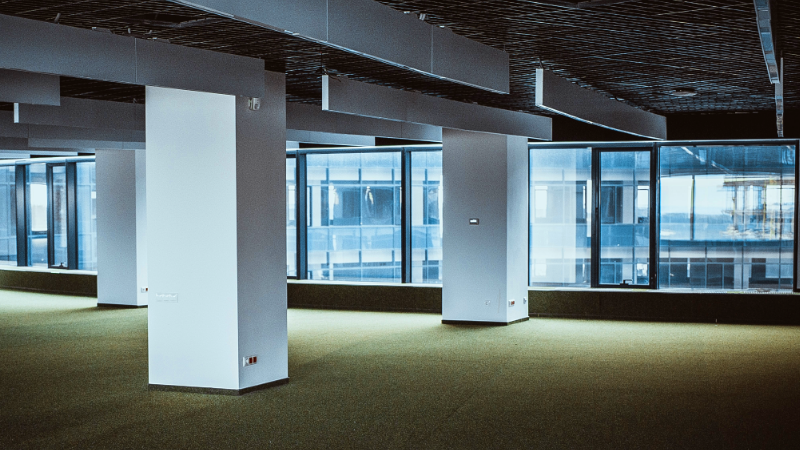Unsere vernetzte Welt verstehen

Welche augmented and virtual reality Apps sind wirklich wichtig?
Robin Tech diskutiert im zweiten Teil seiner Startup & Tech Trends 2017 die Anwendungen von Augmented und Virtual Reality in den Bereichen Gaming, Pornographie, Maschinenwartung, Einkauf und Mensch-Maschine-Interaktion. Lesen Sie in diesem Text seine Einschätzungen zu den technologischen Möglichkeiten und Entwicklungen, die unsere Leben vielleicht besser machen und auf jeden Fall beeinflussen werden.
Deutsche Zusammenfassung: Der Hype um die Augmented Reality (AR) Monster von Pokemon ist zwar wieder vorüber; und auch bleiben die Verkaufszahlen von Virtual Reality (VR) Headsets hinter manchen Erwartungen zurück. Doch die Anzahl und Höhe von Investitionen in AR & VR Startups steigt ungebrochen. Robin Tech stellt den aktuellen Stand der Entwicklungen dar und diskutiert welche relevanten Anwendungen den Weg für ein Massenphänomen ebnen könnten. Dazu gehören die Wartung von Maschinen durch Laien und Mensch-Maschine- Interaktion, die aufgrund stetig steigender Komplexität bald nur noch durch einen Mix an Interaktionstechnologien möglich sein wird.
Augmented and virtual reality (AR & VR) devices have seen a year of broad media coverage – including an avalanche of videos showing people falling over because they forget that their bodies remain in the real world while their minds wander off to distant planets, skydiving adventures, or horror movies . There are multiple obvious applications that are also easy to implement. These low hanging fruits include gaming, pornography, and media consumption in general.
Last year, Pokemon Go took the world by storm by enabling ordinary smartphones to act as augmented reality devices, beaming little monsters onto your desk, lawn, or toilet bowl. The still bulky headsets required for virtual reality are much more intrusive and difficult to use. Headsets such as HTC’s Vive and Facebook’s Oculus Rift saw dropping sales volumes after a short-lived hype. Prices were dropped recently, and it remains to be seen if we indeed face a mass market application or rather a niche phenomenon. Startup investors – who are usually ahead of the curve – recently increased their spendings in this sector. In 2016, we saw 30% more venture capital deals and a 58% increase in deal size compared to the previous year (Dawson, 2017). I have no doubt that these numbers will be similar in 2017, as content production is still lagging behind and more and more possible applications are being tested by startups and large corporations alike.
What’s interesting is that applications that actually solve a problem are becoming more wide-spread. Rather than just notch up consumers’ level of convenience or entertainment, B2B focused AR and VR products can have a tremendous impact on industry processes. Startups such as Daqri build headsets that allow technicians to do maintenance work on complex machines without having in detail knowledge of it. Instead, computer programs and experts can remotely connect to the headset and instruct the worker. Another application is in the healthcare sector. AR/VR technology can help those who might not be able to visit certain places (anymore). But it can also alleviate trauma and shock by letting patients temporarily escape into virtual worlds. Companies like HappyMed work on devices that reduce stress during operations or recovery, though with a purely video-based solution so far. My suggestion is to look out for use cases that go beyond mere entertainment, and to think about processes that are done in a way that is not necessarily the best way. Think navigation when you cannot use your hands, think video conferences that are as immersive as actually being there, think online shopping that let’s you try on clothes or offline shopping with stores that only display what you are interested in, think education and teaching, think human-machine-interaction in general. Computer systems become increasingly complex to handle and interact with. This quite necessarily requires novel ways of interaction. I suspect that we will see a combination of various technologies ranging from speech recognition and natural language processing, augmented realities featuring lifelike avatars, and virtual realities that allow for an immersive and therefore highly efficient operation of machines. In short, AR and VR applications that will define the way we interact with technology in 2017 and beyond. Those applications that enable humans and that significantly reduce costs, because they help to overcome essential challenges will be the ones that pave the way for a wide-spread adoption of AR and VR technologies.
In my next blog posts, I’ll talk about smart homes that finally make sense and and how they are (sometimes) not so smart, gene analysis and editing technologies that raise much more than ethical questions, and space flight.
Dieser Beitrag ist Teil der regelmäßig erscheinenden Blogartikel der Doktoranden des Alexander von Humboldt Institut für Internet und Gesellschaft. Er spiegelt weder notwendigerweise noch ausschließlich die Meinung des Institutes wider. Für mehr Informationen zu den Inhalten dieser Beiträge und den assoziierten Forschungsprojekten kontaktieren Sie bitte info@hiig.de.
Photo: CC0
Dieser Beitrag spiegelt die Meinung der Autorinnen und Autoren und weder notwendigerweise noch ausschließlich die Meinung des Institutes wider. Für mehr Informationen zu den Inhalten dieser Beiträge und den assoziierten Forschungsprojekten kontaktieren Sie bitte info@hiig.de

Jetzt anmelden und die neuesten Blogartikel einmal im Monat per Newsletter erhalten.
Digitale Zukunft der Arbeitswelt
Raus aus dem Digitalisierungsstau: Data Governance bringt Städte und Gemeinden auf die digitale Überholspur
Der Data Governance Wegweiser unterstützt Verwaltungen, digitale Lösungen effektiv umzusetzen.
Netzecho: Reaktionen auf die Tagesschau in Einfacher Sprache
Seit 2024 gibt es die Tagesschau in Einfacher Sprache. Wie wird das neue Nachrichtenformat von Nutzer*innen im Internet diskutiert?
Chancen gegen Einsamkeit: Wie Pflegeeinrichtungen das Quartier vernetzen
Was hilft gegen Einsamkeit im Alter? Pflegeeinrichtungen schaffen neue Räume für Gemeinschaft und digitale Teilhabe.




